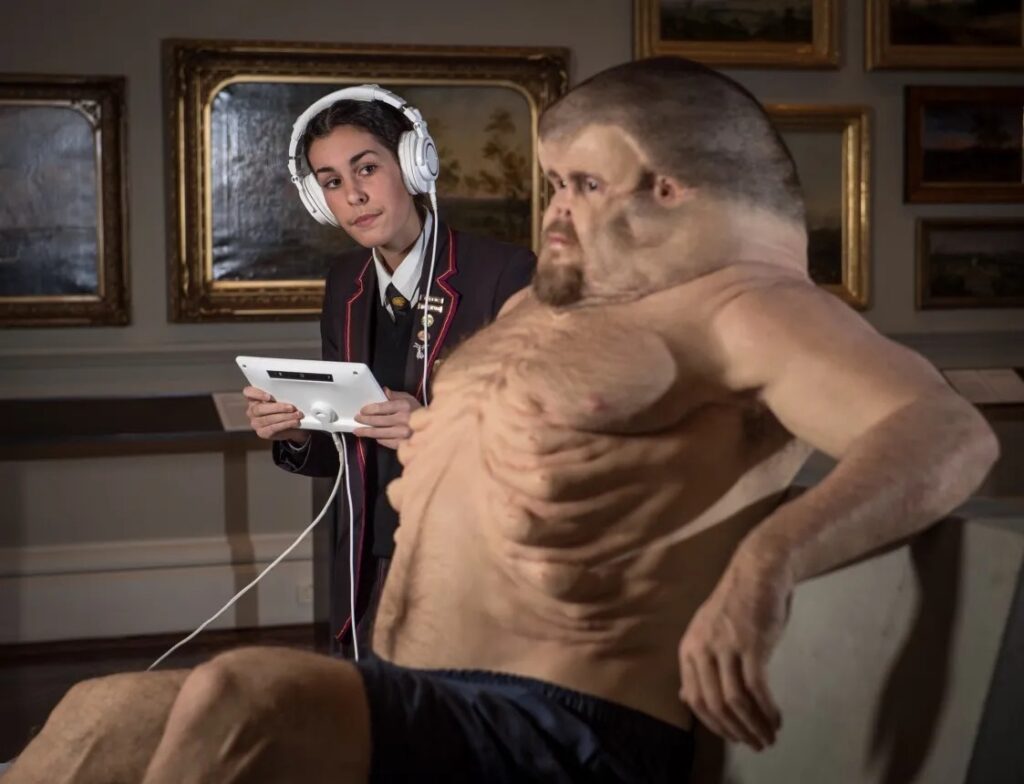Graham is a unique creation designed to show what the human body would need to survive a car crash. He’s not a real person but a sculpture made by artist Patricia Piccinini in collaboration with trauma surgeon Dr. Christian Kenfield.
The project was commissioned by Australia’s Transport Accident Commission (TAC) to highlight the vulnerability of the human body in car accidents and emphasize the need for safer roads and driving practices.
Graham’s body is unlike anything we’re used to seeing. His head is larger than a normal human’s and has built-in “crumple zones,” similar to those in cars.

These zones absorb the impact during a crash, protecting his brain by slowing down the force and preventing severe damage. His skull contains extra cerebrospinal fluid and ligaments to further shield his brain from harm.
Graham’s chest is barrel-shaped and surrounded by fatty tissue to absorb shock. His ribs are reinforced and have airbags between them. These airbags help reduce the force of a collision and protect vital organs like the heart. His face is also designed for safety, with a sunken nose and ears, and fatty tissue around the cheekbones to minimize injury during impact.
One of Graham’s most striking features is his legs. Instead of regular human legs, he has strong, hoof-like feet and extra joints. These allow him to jump out of harm’s way quickly, acting like a built-in spring system. His shins are reinforced to protect one of the most vulnerable bones in the human body, which is usually prone to severe injury in crashes.

The sculpture, made of fiberglass, silicone, and human hair, was first displayed in 2016 at the State Library of Victoria. Visitors could use augmented reality to explore his internal features and learn about his design. According to TAC, Graham serves as an “educational tool” to help people understand how fragile the human body is in high-speed crashes.
The message behind Graham is simple: humans are not built to survive the forces of a car crash, even at speeds as low as 30 km/h. By driving safely and improving road systems, we can avoid needing the extreme features that Graham has.


